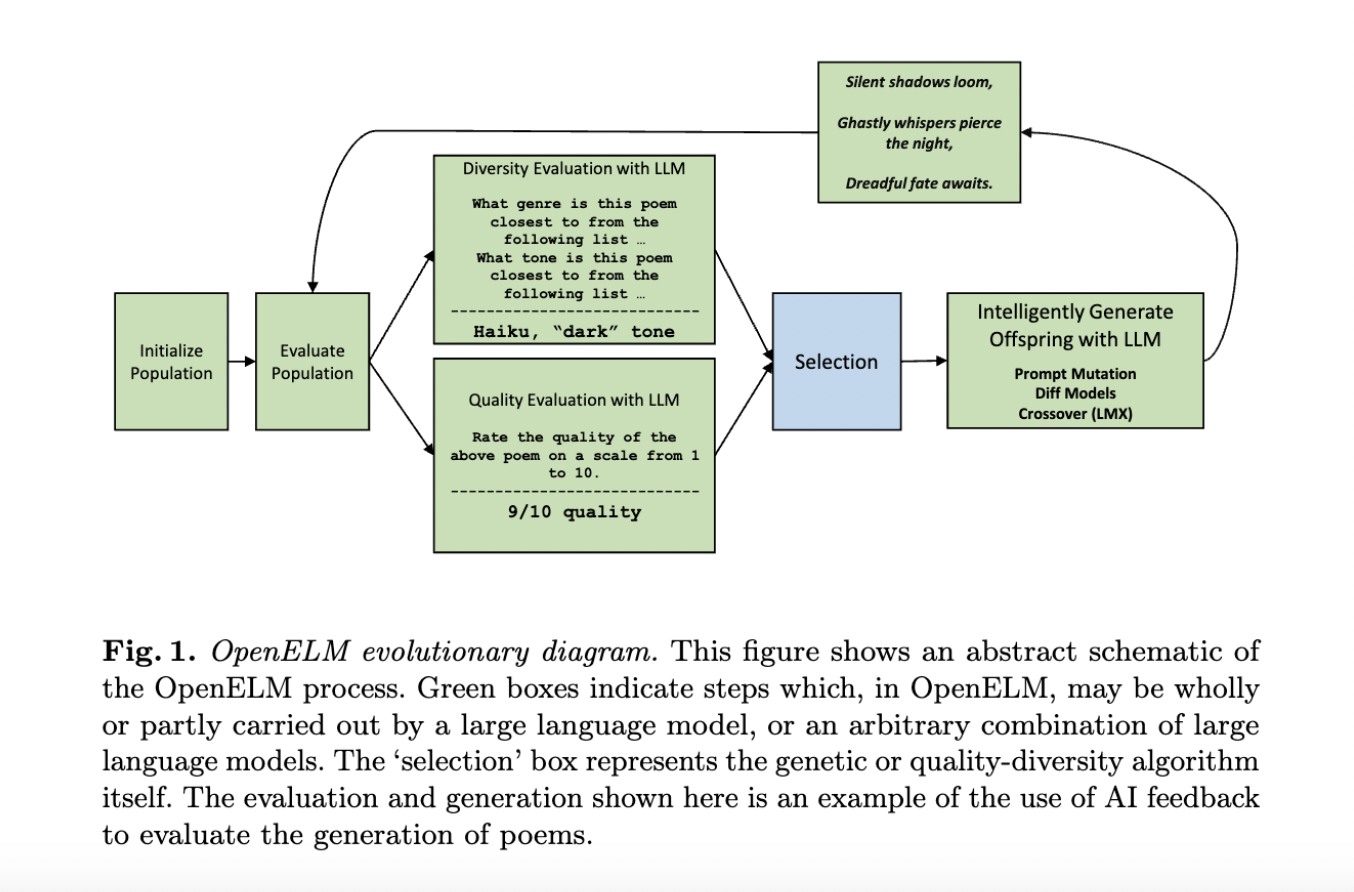
Natural language processing, a major subfield of artificial intelligence, is advancing at an extraordinary pace. With its ability to allow a computer to understand human language the way it is spoken and written, NLP has a number of use cases. One such development is the introduction of Large Language Models, which are the trained deep learning models based on natural language processing, natural language understanding, and natural language generation. These models mimic humans by answering questions, generating accurate text content, completing codes, summarizing long paragraphs of text, translating languages, and so on.
Recently, CarperAI, a leading AI research organization, introduced OpenELM, an open source library that promises to transform the field of evolutionary research. OpenELM, where ELM stands for Evolution through Large Models, combines the power of large language models with evolutionary algorithms to enable the generation of diverse, high-quality text and code. OpenELM version 0.9 was proposed with the aim of providing developers and researchers with an outstanding tool for solving complex problems in various domains. Together with OpenELM, the team also released its paper at GPTP 2023.
Evolution Through Large Models (ELM) demonstrates how LLMs can iteratively enhance, critique and improve their output. This ability can be used to enhance the ability of language models to solve problems and demonstrates their potential as intelligent search operators for both language and code. The idea behind ELM is that LLMs can act as intelligent variation operators in evolutionary algorithms. OpenELM exploits this potential to enhance the troubleshooting capabilities of language models, enabling the creation of high-quality and varied content in areas that the model may not have seen during training. The team introduced OpenELM with four main goals, which are as follows.
- Open source OpenELM provides an open source version of ELM and its accompanying differential models, which allows developers to freely use the library and contribute.
- Model integration: OpenELM is designed to work easily with both closed models, which can only be used with commercial APIs such as the OpenAI API, and open source language models, which can be used locally or on platforms such as Colab.
- User-friendly interface and sample environments: OpenELM aims to provide a simple user interface along with a variety of evolutionary research sample environments.
- Evolutionary potential OpenELM intends to demonstrate the evolutionary potential of language models in combination with evolution and shows how smart variation operators can help evolutionary algorithms, especially in fields such as plain text coding and creative writing, using the possibilities of huge language models.
With a focus on quality-diversity (QD) methods such as MAP-Elites, CVT-MAP-Elites and Deep Grid MAP-Elites, OpenELM, being a feature-rich library, interacts seamlessly with well-known evolutionary techniques. It enables you to create high quality and diverse solutions by encouraging diversity and retaining the best individuals within each specialty. In conclusion, OpenELM marks a significant milestone in the field of evolutionary research using the potential of large language models to generate high-quality and diverse text and code.
Check out thePaper, Blogs,ANDGithub link.Don’t forget to subscribeour 26k+ ML SubReddit,Discord channel,ANDEmail newsletterwhere we share the latest news on AI research, cool AI projects, and more. If you have any questions regarding the above article or if you have missed anything, please do not hesitate to email us atAsif@marktechpost.com
Check out 100s AI Tools in the AI Tools Club
Tanya Malhotra is a final year student at Petroleum and Energy University, Dehradun pursuing BTech in Computer Engineering with a major in Artificial Intelligence and Machine Learning.
She is a Data Science enthusiast with good analytical and critical thinking, coupled with a burning interest in acquiring new skills, leading teams, and managing work in an organized manner.
#CarperAI #Introduces #OpenELM #Open #Source #Library #Designed #Enable #Evolutionary #Search #Coded #Natural #Language #Language #Models
Image Source : www.marktechpost.com
